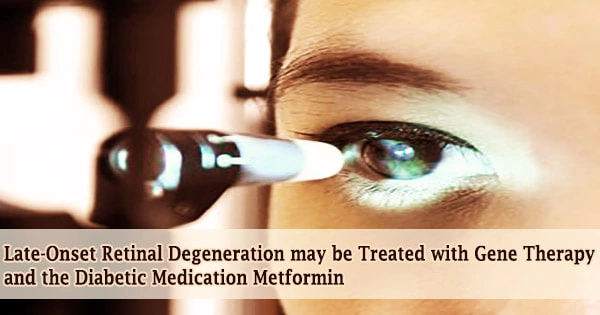Gene therapy and the diabetic medicine metformin have been revealed as promising treatments for late-onset retinal degeneration (L-ORD), a rare and devastating eye disease. To examine the disease, researchers from the National Eye Institute (NEI), which is part of the National Institutes of Health, created a “disease-in-a-dish” model. The research was published in the journal Communications Biology.
“This new model of a rare eye disease is a terrific example of translational research, where collaboration among clinical and laboratory researchers advances knowledge not by small steps, but by leaps and bounds,” said Michael F. Chiang, M.D., director of the NEI, part of the National Institutes of Health.
L-ORD is an uncommon, dominantly inherited condition, which means it can happen when one parent has an aberrant gene. A mutation in the gene that codes for the protein CTRP5 causes L-ORD. People with the disease have aberrant blood vessel growth and apolipoprotein E deposits in the retina, which are important in fat metabolism.
Around the age of 50 to 60, symptoms such as difficulties seeing in the dark and loss of center vision begin to show. The retinal pigment epithelium (RPE), a layer of tissue that nourishes the retina’s light-sensing photoreceptors, shrinks and dies as L-ORD advances. When RPE is lost, photoreceptors are lost, and vision is lost as a result.
They created a laboratory model that generates RPE from induced pluripotent stem cells derived from the skin (fibroblasts). They used RPE from two L-ORD siblings and RPE from two unaffected siblings who did not have the disease-causing mutation as a comparison.
This new model of rare eye disease is a terrific example of translational research, where collaboration among clinical and laboratory researchers advances knowledge not by small steps, but by leaps and bounds.
Michael F. Chiang
The investigators were led by Kapil Bharti, Ph.D., who directs the NEI Ocular and Stem Cell Translational Research Section, and Kiyoharu (Josh) Miyagishima, Ph.D., and Ruchi Sharma, Ph.D., staff scientists in the section and leading authors of the study.
Apolipoprotein E deposits around the tissue and aberrant discharges of vascular endothelial growth factor, a protein that drives blood vessel formation, were found in the patient-derived RPE, which shared essential characteristics with the condition in humans. The RPE cells were likewise malformed or dysmorphic. The RPE of the unaffected siblings, on the other hand, looked to be normal. The researchers also discovered that as compared to the models created from unaffected siblings, the patient-derived RPE secreted substantially less of the mutant and non-mutant CTRP5 protein.
They discovered that mutant CTRP5 was less likely to connect with cell receptors that assist in fine-tune fat metabolism control using a computer modeling technique. AMP-activated protein kinase (AMPK), a crucial regulator of energy homeostasis and fat metabolism, is chronically active as a result of less receptor binding.
They hypothesized that persistently active AMPK becomes less sensitive to energy demand and food supply mismatches. When metabolic abnormalities go untreated, they disrupt lipid metabolism, which explains why apolipoprotein E accumulates near the RPE layer as deposits.
Chemical inhibition of chronically active AMPK in the patient-derived RPE model resulted in less deposits of apolipoprotein E and less aberrant release of vascular endothelial growth factor, according to the researchers.
They then examined two potential therapeutic techniques using the patient-derived RPE model: a gene therapy approach to induce normal CTRP5 expression in the RPE model, and the diabetes medicine metformin, which appears to alter AMPK activity, re-sensitizing it to changes in cellular energy status. In RPE models, both techniques inhibited the appearance of L-ORD.
“Importantly, we now have two potential strategies to disrupt the L-ORD disease process. While gene therapy may be years away, metformin is a drug that’s long been used to treat diabetes,” said Bharti, who with NEI collaborators is planning a clinical trial to test the drug in people with L-ORD.
Despite its rarity, L-ORD illness is similar to other retinal degenerations such as age-related macular degeneration, which is a prominent cause of visual loss. The model created for this study could be useful in understanding pathological changes in the RPE as people get older.
The study was funded by the NEI Intramural Research Program grants EY005121 and EY026525.





